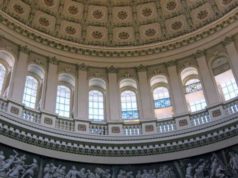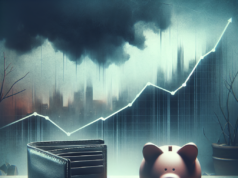
In recent months, a troubling trend has emerged in the economic landscape: a significant surge in bankruptcy filings across various sectors. This phenomenon has raised alarms among economists, policymakers, and business leaders alike, as it signals deeper issues within the economy that could have far-reaching consequences. As companies and individuals alike grapple with financial instability, understanding the factors driving this increase is crucial for anticipating its impacts on the broader economic environment.
Understanding the Recent Surge in Bankruptcy Filings Across Various Sectors
The recent spike in bankruptcy filings has been observed across a diverse array of sectors, including retail, hospitality, and manufacturing. According to data from the American Bankruptcy Institute, filings have increased by over 25% compared to the previous year, with small businesses particularly hard-hit. The retail sector, which has faced unprecedented challenges due to changing consumer behaviors and the rise of e-commerce, has seen a notable number of high-profile bankruptcies. Similarly, the hospitality industry, still reeling from the effects of the COVID-19 pandemic, continues to struggle with reduced consumer demand and rising operational costs. This widespread trend underscores the fragility of many businesses in the current economic climate, prompting urgent discussions about the sustainability of various industries.
Key Factors Contributing to the Rise in Bankruptcy Filings in 2023
Several key factors have converged to create an environment conducive to increased bankruptcy filings in 2023. First and foremost, the lingering effects of the COVID-19 pandemic have left many businesses with unsustainable debt levels, exacerbated by prolonged supply chain disruptions and labor shortages. Additionally, the rapid rise in inflation has significantly increased operational costs, squeezing profit margins for many companies. The Federal Reserve’s aggressive interest rate hikes, aimed at curbing inflation, have further complicated matters by increasing borrowing costs for businesses already struggling to stay afloat. Together, these factors have created a perfect storm, pushing many companies to the brink of insolvency.
The Economic Implications of Increased Bankruptcy Rates for Businesses and Consumers
The rise in bankruptcy filings carries profound implications for both businesses and consumers. For businesses, increased bankruptcies can lead to a contraction in the market, resulting in reduced competition and potential monopolistic behaviors among surviving firms. This can stifle innovation and lead to higher prices for consumers. On the consumer side, the fallout from business bankruptcies can manifest in job losses, reduced wages, and diminished purchasing power. As companies close their doors or downsize, the ripple effects can lead to increased unemployment rates and a decline in consumer confidence, further exacerbating economic challenges. The interconnected nature of these impacts underscores the urgency of addressing the underlying issues contributing to the rise in bankruptcies.
Analyzing the Impact of Inflation and Interest Rates on Bankruptcy Trends
Inflation and rising interest rates are two critical factors influencing the current trends in bankruptcy filings. Inflation has eroded consumer purchasing power, leading to decreased spending and lower revenues for businesses. As costs for raw materials, labor, and logistics continue to rise, many companies find it increasingly difficult to maintain profitability. Concurrently, the Federal Reserve’s decision to raise interest rates in an effort to combat inflation has made borrowing more expensive. For businesses reliant on loans to finance operations or expansion, this has created a challenging environment where servicing existing debt becomes more burdensome. The combination of these economic pressures has led many businesses to seek bankruptcy protection as a means of restructuring their debts and attempting to navigate the turbulent economic landscape.
Government Responses: Policies to Mitigate the Effects of Rising Bankruptcies
In response to the surge in bankruptcy filings, government officials and policymakers are exploring various measures to mitigate the effects on the economy. Some proposals include enhancing access to credit for small businesses, providing targeted financial assistance, and implementing policies aimed at stabilizing key industries. Additionally, there is a growing call for reforms to the bankruptcy process itself, aimed at making it more efficient and less burdensome for struggling businesses. By addressing the root causes of financial distress and providing support to affected sectors, policymakers hope to foster a more resilient economic environment that can withstand future shocks.
Future Projections: What the Surge in Bankruptcy Filings Means for Economic Recovery
Looking ahead, the surge in bankruptcy filings raises important questions about the trajectory of economic recovery. While some analysts believe that the current wave of bankruptcies may lead to a necessary “cleansing” of the market, allowing stronger companies to emerge, others caution that the long-term effects could hinder growth. The potential for increased unemployment and reduced consumer spending could stifle economic momentum, making recovery more challenging. Furthermore, if inflation persists and interest rates remain high, the risk of further bankruptcies could loom large. Ultimately, the path to recovery will depend on a combination of effective government interventions, business adaptability, and broader economic conditions.
The surge in bankruptcy filings serves as a stark warning for the economy, highlighting vulnerabilities that could impede recovery efforts. As businesses and consumers navigate this challenging landscape, understanding the underlying factors driving these trends is essential for developing effective strategies to foster resilience. Policymakers must act decisively to address the root causes of financial distress, while businesses must adapt to an evolving economic environment. The coming months will be critical in determining whether the current wave of bankruptcies will lead to a more robust economic foundation or further entrench existing challenges.





















